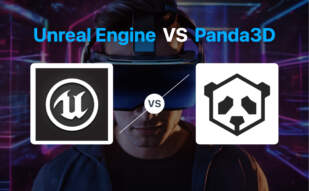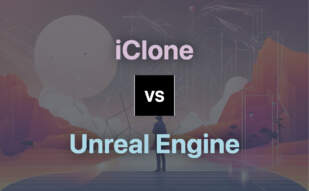
Unreal Engine
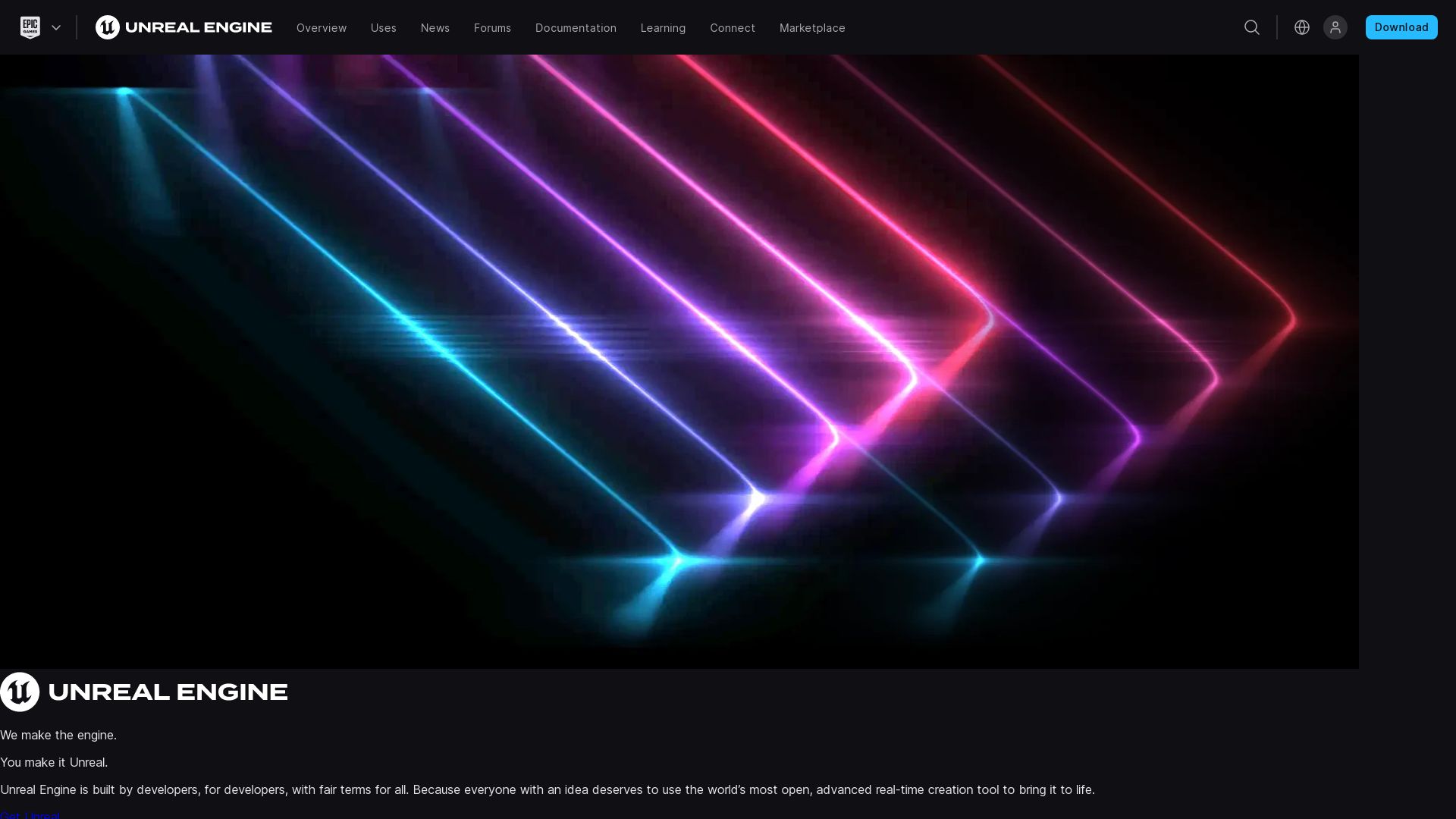
Developed by Epic Games, the Unreal Engine (UE) series delivers 3D computer graphics game engines since 1998. From first-person shooters to a wider range of game genres and industries such as film and TV, UE’s flexibility is notable.
Unreal Engine Best Features
- Support across various platforms, including desktop, mobile, console, and VR.
- Coding in C++, enabling performance boosts and fine-grained control.
- Unreal Development Kit supporting iOS game and app creation.
- Noteworthy features from acquisitions like Quixel.
- The Unreal Engine Marketplace, fostering creator monetization.
- Wi-Fi support in the Unreal Engine for schools and universities.
- Basic project templates for first-person or third-person experiences.
| Feature | Benefit |
| Level Editor, UnrealEd | Supports real-time constructive solid geometry operations |
| Unreal Development Kit | Enables iOS game and app creation |
| Unreal Engine Marketplace | Allows developers to sell or buy creations |
Unreal Engine Disadvantages
- Commercial royalty model: Epic charges 5% of revenues over USD 1 million.
- Intensive learning curve: UE, being feature-rich, may initially demand time and patience
Unreal Engine Pricing
Unreal Engine is free for all users. However, Epic charges 5% of revenue for products that generate more than $3,000 per quarter.
Unreal Engine Use Cases
Use Case 1: PC First-Person Shooters
Epic Games designed Unreal Engine initially for developing PC first-person shooter games, making it a top choice for creators in this genre.
Use Case 2: Film & Television Industry
Unreal Engine now finds extensive applications in the film and television industry too, shaping more realistic and immersive experiences.
Use Case 3: iOS Game and App Development
With the Unreal Development Kit’s support for iOS, this tool becomes an ideal choice for iOS game and app developers.
Maya
Our exploration into the alternatives of motion capture lands us first upon Maya, arguably one of the most reputable 3D computer graphics applications. Birthed by Alias and nurtured by Autodesk, Maya, an innovative software available on Windows, macOS, and Linux platforms, braids the worlds of animation, television, and visual effects.
Maya: A Symphony of Features
- Unveils the canvas of engaging 2D drawing and detailed 3D modeling.
- Efficient data import/export management easing data transfer.
- A sublime and intuitive NURBS modeling system for crafting complex shapes.
- Animated simulation with deformations and effects invoking life into creations.
- Tethered into Unreal Engine and Unity game engines, making it a top choice for game developers.
- Advanced texturing, shading, lighting systems enabling realistic object representation.
- Equipped with mental ray, an integrated renderer pulsating with advanced features.
| Feature | Benefit |
| Highly customizable user interface | Caters to Disney-esque precision and personalization |
| MEL Scripting Language | Ensures flexibility and control in animation making |
| Comprehensive support system | Encouraging wide usage with quick troubleshooting |
Maya: The Checkered Board of Limitations
- The software, while majestic, demands robust systems for optimal performance.
- The complexity of the tool may prove intimidating for beginners.
- Although prized with a depth of features, Maya requires substantive learning hours to master.
Maya Pricing
Pricing of Maya, with its layered richness, takes the form of monthly or yearly subscriptions. Earnings of businesses influence the expenditure too; those amassing less than $100k are eligible for a lower fee. Moreover, a free trial paints a tempting picture for the curious minds, alongside an educational license for the scholars of animation.
Maya Use-Cases
Use case 1: Animation Industry
Renowned players of the animation industry such as Disney have found Maya to be an indispensable charter to voyage through seas of animation. Films like Ice Age, Star Wars series, and The Lord of the Rings series are testimonies to Maya’s capabilities.
Use case 2: Gaming Industry
Game developers find Maya an efficient ally in the creation of interactive 3D applications, with the ability to import assets into popular engines such as Unreal Engine and Unity.
Use case 3: Businesses
Businesses too have nestled Maya into their rosters, with top company users including Accenture, Dell, and EYGBS India, utilizing Maya for designing 3D solutions, thereby seizing the power of visual storytelling.
Juicer
Imagine if you could integrate the principles of a juicer into your motion capture journey. Just like a juicer extracts the most nutritious elements of fruits and vegetables, the concept of Juicer, as a motion capture alternative, helps you extract and combine the most valuable elements of 3D graphics and modeling.
Top Juicer Features
- High-yield extraction mirroring the principle of a masticating juicer, ensuring maximum data from your motion capture efforts.
- Silent and compact like a masticating juicer doesn’t interrupt the creative process, ensures easy integration into any workspace.
- Efficient processing and separation analogous to how a juicer separates skin, pulp, and pips from the juice, offers a refined and clear data output.
- Ease of use and cleaning parallels the usability of popular juicers like the Omega H3000D Cold Press, simplifying your workflow.
| Feature | Description |
| Efficiency | Mimics the high juice yield of models like Nama J2 and Novis Vita, ensuring a efficient data extraction from your motion capture inputs. |
| Functionality & Intuitiveness | Tested using different inputs analogous to testing a juicer with different produce, which guarantees general applicability and ease of operation. |
| Noise and Size | Keeps noise level and equipment footprint low, similar to a masticating juicer, to keep your focus on the creative process. |
Juicer Limitations
- Possibly a higher up-front investment, similar to purchasing a juicer, could be a constraint, but remember the long-term benefits in mind.
- Prep work might be required, similar to cutting fruits and vegetables, depending on project scope and complexity.
Juicer Use Cases
Augmented Reality Content Developers
With its high data yield and efficiency, Juicer enables developers to faithfully capture and re-create an array of movements, enhancing the realism and immersion of their content.
Motion Graphic Artists
By separating unnecessary data like juicers separates pulp and skin, artists can focus on the core components of their design for a cleaner, more focused end result.
3D Animators
Due to its ease of use, efficiency, and manageable noise levels, Juicer allows animators to optimize their workflow and focus on the creative aspects of their projects.
MotionBuilder
Say hello to MotionBuilder, an industry-leading product of Autodesk. This dynamic 3D character animation software provides an all-in-one solution for motion capture, mixing traditional keyframe animation with innovative virtual cinematography.
MotionBuilder’s Top Features
- Packed with blends of prebuilt moves, it makes high-quality 3D character animations simple and effective.
- The product houses production-proven tools for motion capture data management, boosting efficiency without compromising creativity.
- Features real-time 3D character engine for accurate human skeleton movement production.
- Interoperability with other 3D applications through FBX data exchange for smooth animation workflows.
| Feature | Benefit |
| Software Development Kit | Streamlines the management of motion capture data. |
| Interactive Environment | Optimized to improve workflow and creative efficiency. |
| High Quality Animations | Create visual spectacles in advertisements and video games. |
MotionBuilder’s Downsides
- A yearly subscription is required for access, with no perpetual licenses on offer.
- The installation is limited to only three devices with a single subscription.
MotionBuilder Pricing
Access to MotionBuilder comes at the cost of an annual subscription of around $1,950.
MotionBuilder Use Cases
Use case 1 – High-quality Animation Production
Renowned animation and game studios trust MotionBuilder for producing rapid, high-quality animations.
Use case 2 -Creating Dominant Advertisements
Majors like Ford Motors and Coca-Cola rely on MotionBuilder to generate compelling animations for their advertisments.
Use case 3 – Bridging the Industry Gap
For aspiring animators, learning MotionBuilder can significantly strengthen their character animation skills and bridge the gap to industry standards.
Unity

Established in 2005, Unity has been a significant player in the game development industry, respected for its ability to create stimulating 3D and 2D games. Its strength lies in delivering cross-platform games including Android and iOS platforms with unmatched precision and adaptability to several operating systems. From Augmented Reality applications to 3D simulations, Unity has consistently catered to the diverse needs of developers around the world.
Unity Top Features
- Impressive rendering technology and tools, aiding high-quality game creation.
- Launch of games across different platforms including Android and iOS.
- Compatibility with several operating systems for creating Augmented Reality to 3D simulations.
- Dynamic and integrated asset store with diverse pre-designed textures and features.
- Variety of coding languages including BOO script, Javascript, and C#.
- Unity’s active and robust developer community for troubleshooting and system improvement.
| Features | Benefits |
|---|---|
| Cross-Platform Support | Seamless launch of games on different operating systems and platforms. |
| Asset Store | Availability of diverse pre-designed textures and features for brainstorming game design. |
| Coding Language Flexibility | Allows developers to code in BOO script, Javascript, and C#. |
Unity Limitations
- Novel pricing model effective January 1, 2024, might hurt the financial sustainability of solo, indie, and mobile developers.
- Potential abuse of per-install fees, including repeated downloads by a single user, is a source of concern for developers.
- Diminished trust due to sudden changes and retroactive fees.
- Potential hampering of digital preservation efforts due to new pricing.
Unity Pricing
A new pricing model will come into effect on January 1, 2024, where developers pay a fee each time a game using Unity software is installed. However, no install fee will be charged until the game generates $200,000 in revenue and surpasses 200,000 installations. Games from the US, UK, and other standard markets bear higher fees than emerging markets like India and China.
Unity Use Cases
Use case 1: Mobile Game Development
Unity’s cross-platform support makes it an excellent option for developers creating games for Android and iOS platforms. It offers a fully integrated development environment for mobile game development.
Use case 2: Augmented Reality and Virtual Reality Games
With Unity’s compatibility with various operating systems, developers can create immersive AR/VR games, providing end-users with realistic and interactive experiences.
Use case 3: 3D Simulations
Unity’s powerful rendering technology allows developers to create realistic 3D simulations, making it a handy tool in industries such as architecture, engineering, and urban planning.
Blender
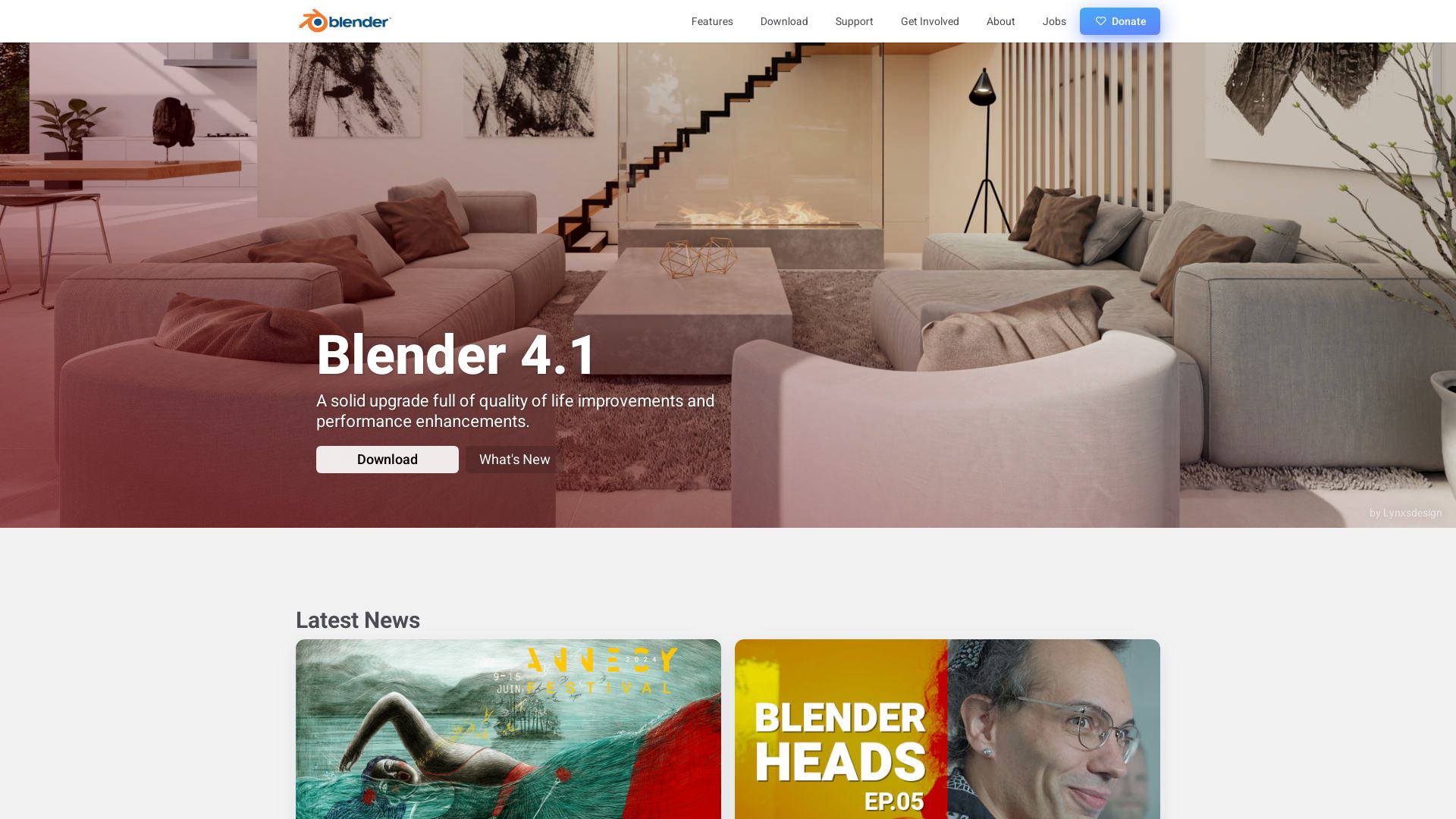
Presenting Blender, an all inclusive, open-source tool set for 3D computer graphics that evolves continuously through community involvement. Initially created for animated films, it has broadened its reach to encompass visual effects, art, 3D-printed models, motion graphics, interactive 3D applications, and virtual reality.
Blender Top Features
- 3D modelling: A key aspect of graphics and animation.
- UV mapping and texturing: Offering high-quality visuals with intricate detailing.
- Digital drawing and raster graphics editing: An essential tool for artists.
- Fluid and smoke simulation, soft body simulation: Capturing physical phenomena for virtual emulation.
- Animation: The backbone of any motion graphics.
- Match moving, compositing, rendering: Delivering realistic motions and final output.
| Operating System | Linux, macOS, Windows, BSD, Haiku |
| Supported Languages | 36 Languages |
| 3D file format support | Alembic, 3DS, FBX, DXF, SVG, STL, UDIM, USD, VRML, WebM, X3D, OBJ |
Blender Limitations
- Blender Game Engine has been deprecated from the 2.8 release.
- The Blender Internal was removed in favor of Eevee renderer in the 2.80 release.
Blender Pricing
Merely a cherry on top of an already sweet deal, Blender is free, embodying the very spirit of open-source! It is backed by its thriving community, setting you back absolutely nothing.
Blender Use Cases
Use case 1: Animated Films
Blender excels at creating riveting animated films, equipped with robust 3D modeling and animation tools.
Use case 2: Virtual Reality
Fulfill your immersive virtual reality pursuits via Blender’s versatile suite of features.
Use case 3: 3D-printed Models
Manifest your ideas into tangible reality, Blender aids in crafting perfect 3D-printed models.
Daz 3D
Established in Utah in 2000, Daz 3D is a software firm recognized for its commitment to rigged 3D human models, accessory content, and software for hobbyists and prosumer market. Their vast library of over 5 million assets, robust 3D-content development, and a continually increasing software product line make Daz 3D a formidable alternative in motion capture.
Daz 3D Top Features
- Robust Genesis platform for body morphing and realism in representation.
- Recent iterations like Genesis 8.1 and 9 bring in substantial improvements in facial expressions, shaders, UV, and physical realism.
- Daz Bridges tool that supports transferring content to third-party applications.
- dForce physics for reality mimicking simulations of cloth and hair.
- Backward integration compatibility with earlier Genesis versions.
| Feature | Description |
|---|---|
| Non-Fungible People | Unique NFT collection of 8,888 female/non-binary PFP avatars for metaverse utility. |
| Licensing Model | The company operates via license-based pricing model in its marketplace. |
Daz 3D Downsides
- Genesis 8 introduced significant changes reducing backward compatibility.
- Robust competition from platforms such as Adobe Character Animator, MetaHuman Creator, iClone can affect market presence.
Daz 3D Pricing
Though the product is free, Daz 3D operates via a license-based pricing model in its marketplace for additional assets and content.
Daz 3D Use Cases
Use Case 1 – Film and TV Industry
Novel 3D models rendered via the Genesis platform can be used to create realistic characters for film and TV studios.
Use Case 2 – Video Game Design
Aided by the Daz Bridges tool, game developers can transfer content into popular game development platforms like Unity, Unreal Engine etc.
Use Case 3 – Print Illustrations
Highly customizable 3D human models created using Daz 3D are perfect for detailed print illustrations.
iClone
Welcome to the world of iClone, a strategic powerhouse in real-time 3D animation and rendering. This software turns professionals into masters of animation for films, previz, video games and so much more. With a user-friendly production environment, iClone blends character animation, scene design, and cinematic storytelling into its tactical arsenal.
iClone Top Features
- User-friendly production environment for seamless navigation and animation.
- 3DXchange 7 supporting the export & import of more characters, PBR content, cameras, character morphs.
- 3D facial control system for detailed character animation.
- NLP and player control for intuitive manipulation and engagement.
- Real-time particle animation for immersive visual effects.
| Feature | Benefits |
| Facial muscle-based control | Enables realistic characterization and lip-sync. |
| Drag-n-drop interface | Eases usage and improves scene organizing. |
| iClone Content Store | Provides limitless options for character and scene design. |
iClone Limitations
- Partial integration with 3DXchange Pipeline and Curve Editor. Potential for software compatibility issues.
- Requires hardware support for high-definition animation rendering and exporting.
iClone Pricing
iClone provides its vast suite of features for a competitive price of $599.
iClone Use Cases
Use case 1: Video Games
iClone provides game developers an expansive world creation toolkit, giving them the freedom to design complex characters and captivating landscapes.
Use case 2: Films and Previz
For filmmakers, iClone’s powerful animation and rendering tools allow for cinematic storytelling, creating unique visual experiences for their audience.
Use case 3: Education and Business
As a 3D simulator, iClone assists educators in presenting complex ideas engagingly and businesses in visualizing concepts for clients and stakeholders.
Houdini
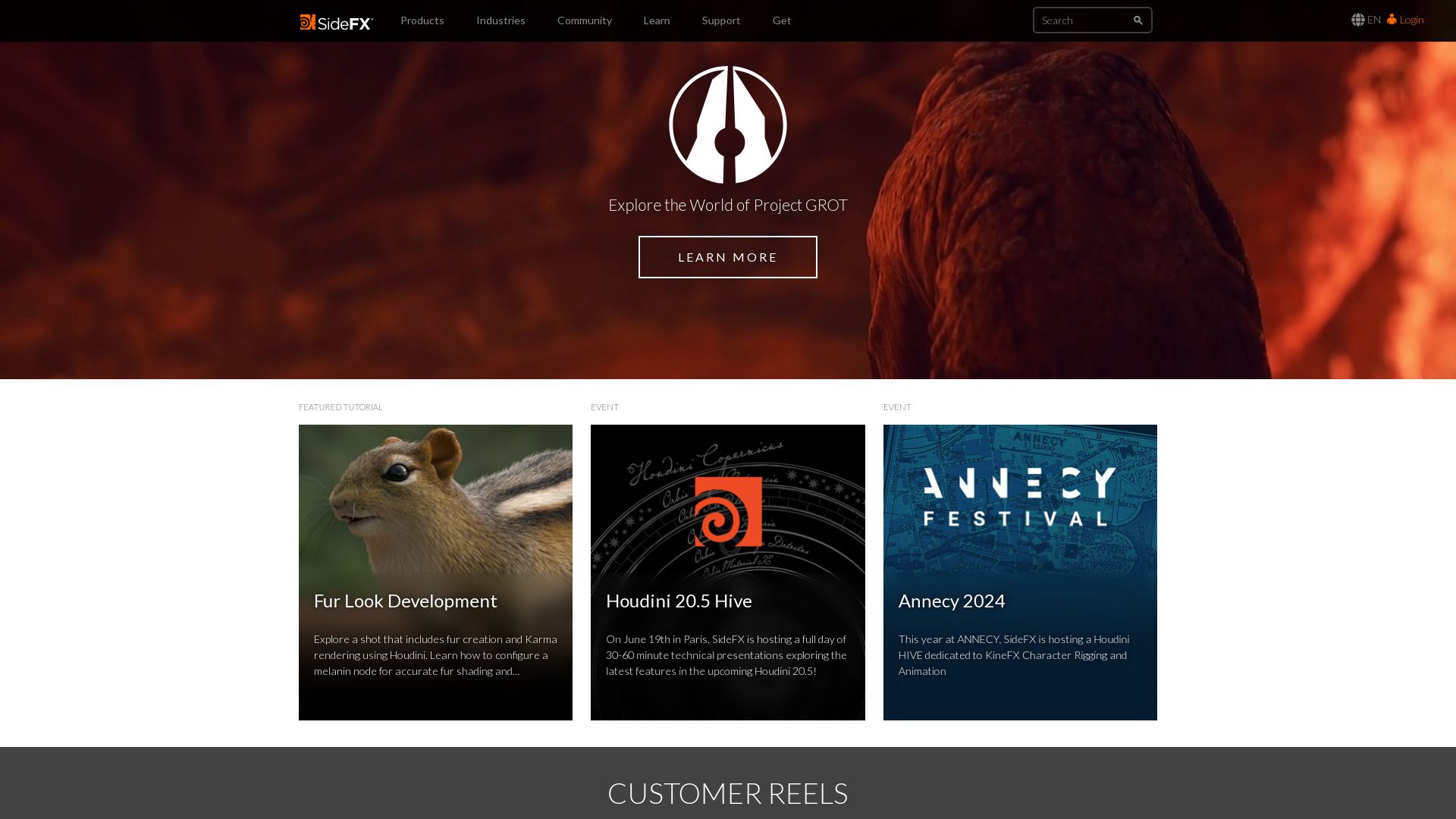
Meet Houdini, a powerful 3D animation and special effects tool designed by SideFX, hailing from Toronto and rocking the VFX world for 25 inspiring years.
Houdini Top Features
- Unparalleled node-based procedural workflow allowing countless iterations for that perfect refining touch
- Remarkable dynamic simulation tools bestowing the ability to create stunningly realistic visual effects
- Robust API support with a keen focus on Python
- Custom node encapsulation facilitating network sharability
| Feature | Description |
|---|---|
| Suited for Technical artists | Houdini is particularly suited to visual effects artists with a technical background. |
| Fluid dynamics | Boasts advanced tools for simulating fluid mechanics and dynamics. |
| Game Dev integration | Early 2000s saw Houdini’s successful integration into the blooming video game development industry. |
Houdini Downsides
- Requires a technical background for the best use of advanced features.
- Demanding system requirements with a need for 4GB+ memory and an Intel or AMD x64 CPU with SSE 4.2.
- Potentially steep price for commercial use.
Houdini Pricing
Houdini isn’t shy about welcoming all. From a Free Houdini Apprentice version aimed at students and hobbyists to a Houdini FX perpetual license costing $4,495, it has a range for everyone.
Houdini Use Cases
Use case 1: Film, TV and Gaming Industry
Houdini has been the secret ingredient in mesmerizing visuals of epic sagas like Disney’s Frozen, Zootopia, and Fantasia 2000, and games with intense effects like Killzone 2 and Uncharted.
Use case 2: Virtual Reality
Stepping beyond real, Houdini’s advanced dynamics simulation tools make it a perfect match for the Virtual Reality paradigm.
Use case 3: Incubation stage developers
For developers in the incubation phase, Houdini Indie is a boon, giving access to commercial-grade features, facilitating the birth of game-changing innovations.
Substance Designer
A brainchild of Adobe, Substance Designer is a versatile material-authoring software packed for creating complex 3D textures and meshes.
Substance Designer Top Features
- Substance Engine 9 allows nested loops and complex repetitions for designing robust 3D textures.
- Spline and Path tools offer extensive options for 2D shape manipulation.
- An upgraded ‘ dot node’ with ‘portal’ functionality enhances data transfer efficiency without wire connection.
- A dedicated Home Screen for quick access to tutorials and project settings, ensuring a user-friendly experience.
| Feature | Benefit |
|---|---|
| Spline Tools | Creates, merges, transforms, and renders splines with 25 new nodes |
| Path Tools | Generates paths from grayscale masks and converts them to splines |
| Portal Functionality | Streamlines data transfer in the node graph |
Substance Designer Limitations
- Long-term users might miss the discontinued procedural geometry toolset and model graphs.
- No native options for 3D model authoring with only limited displacement capabilities offered.
Substance Designer Pricing
Substance Designer provides different licensing options, including a one-time purchase license for $149.99 via Steam or a subscription plan at $19.99/month or $219.88/year as part of Adobe’s Substance 3D subscriptions. Note that for the Linux edition, a pricier Creative Cloud Plan for Teams is required, costing $1,198.88/year.
Substance Designer Use Cases
Use case 1: Advanced Material Creators
Substance Designer is a game-changer for professionals and enthusiasts seeking to develop intricate materials and tiling textures compatible with any engine.
Use case 2: AAA Game Developers and Indies
With games like Deathloop and Assassin’s Creed Valhalla developed using Substance Designer, it’s a trusted ally for game developers.
Use case 3: Feature Animation and Visual Effects studios
Studios requiring advanced 3D texture authoring for animations or visual effects will benefit from the Substance Designer’s powerful toolset.
Sculptris
Developed by Pixologic, Sculptris is a versatile tool that stands out in the realm of 3D design and modeling. Known for its seamless ZBrush integration, Sculptris frees artists from worrying about underlying topology and technical constraints, allowing them to focus solely on their visual designs.
Sculptris Top Features
- Dynamic Topology: With Sculptris Pro mode, brushes change the model’s topology on the fly.
- Digital Sculpture: Sculptris treats the mesh as virtual clay, facilitating creative freedom.
- Tessimation: This unique technology, combining tessellation and decimation, optimizes the sculpting process and results.
- Compatibility: Sculptris works with imported models, scan data, ZSphere adaptive skins, and decimated models.
- Detail Control: Depending on the brush size, Sculptris allows for dense or minimal triangulation, suitable for fine detail or broad surface deformations.
| Integration | Use Cases |
|---|---|
| Live Boolean System | Used for concept creation, refining Boolean mesh results, 3D print files editing. |
| CAD Files | Aids in modifying CAD files and working on complex 3D design projects. |
| ZBrush | Seamless integration with ZBrush improves digital artistry and workflow. |
Sculptris Limitations
- May require initial learning curve for beginners or those new to digital sculpting.
- Lack of advanced features compared to premier 3D software like 3ds Max or Maya.
Sculptris Use Cases
Use case 1: Gaming
Sculptris is significantly instrumental in the gaming industry, empowering designers to create detailed game characters and objects.
Use case 2: Animation
For animated films, Sculptris contributes to detailed scene reconstructions, providing animators with the ability to refine every frame.
Use case 3: 3D Printing
3D print enthusiasts can use Sculptris to edit and fine-tune 3D print files, adding intricate details to their final products.
Patrick Daugherty
Content writer @ Aircada. Merging AR expertise with a love for late-night gaming sessions.



